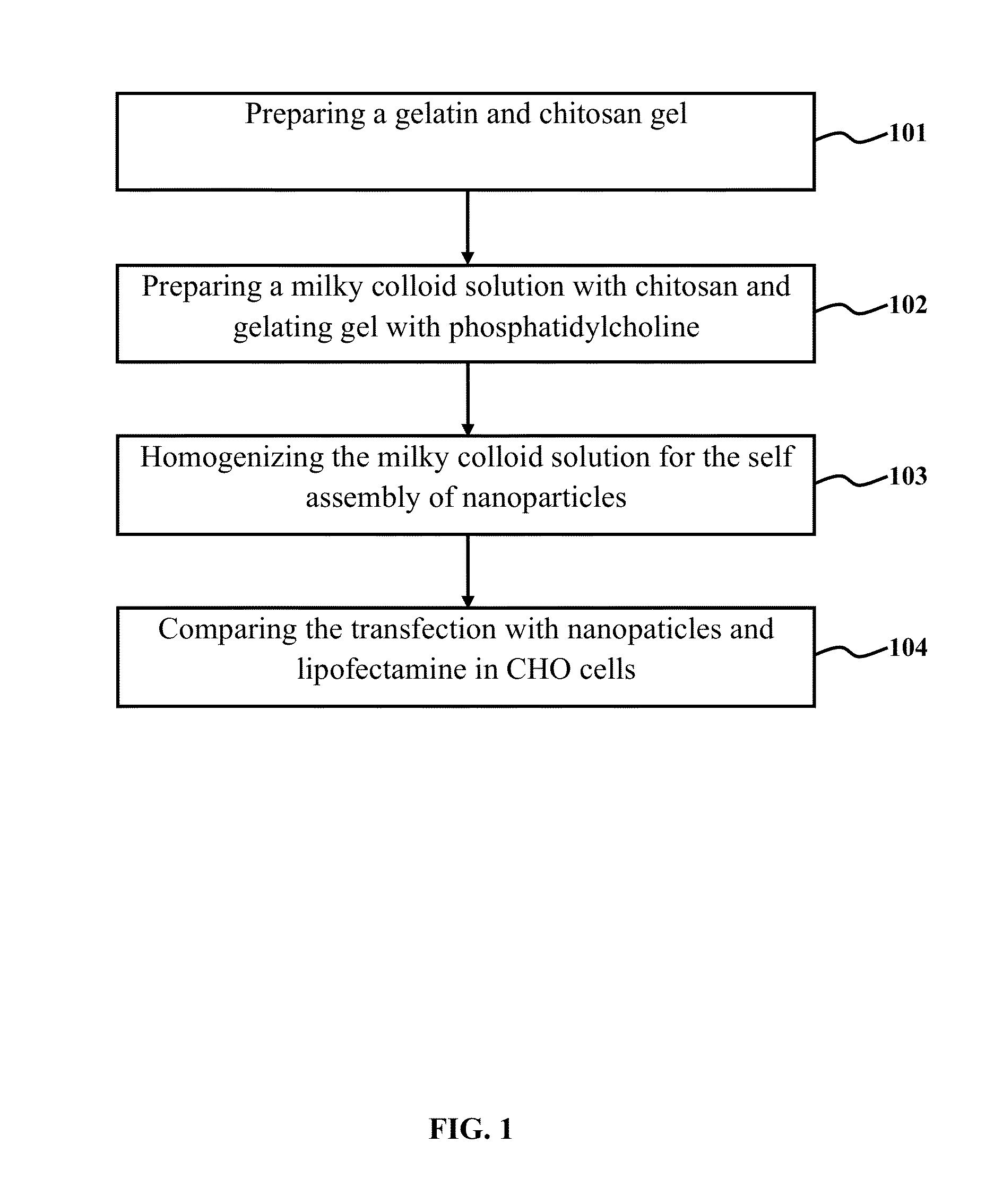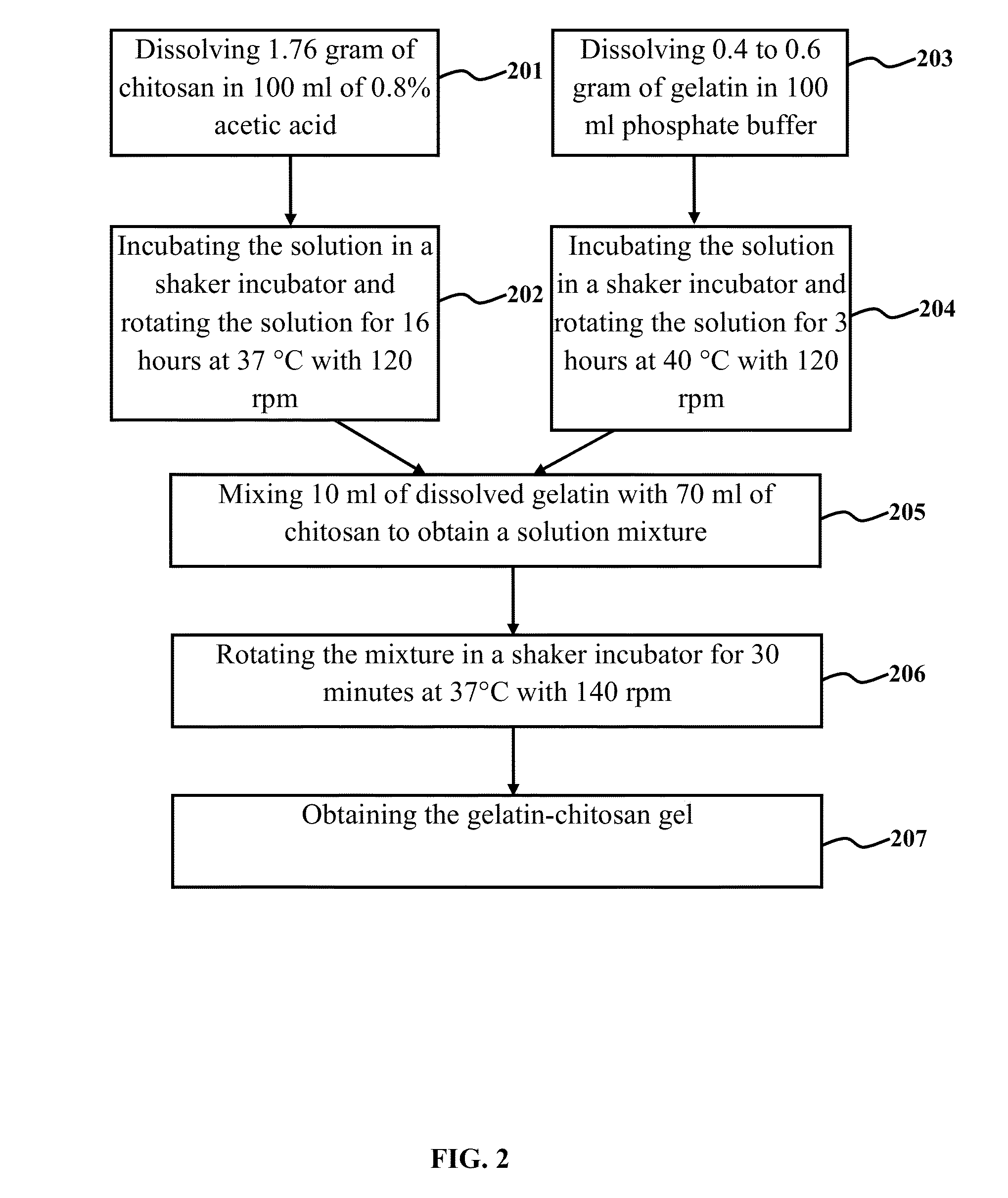Nonviral targeted nanoparticle system for gene transfer and drug delivery
a technology of gene transfer and nanoparticles, applied in the field of molecular nanotechnology, can solve the problems of logistical problems of viral vectors to deliver genetic material to cells, non-specificity of metal based nanoparticles for drug delivery systems, and inability to meet the immunogenicity of target cells and oncogenic effects,
- Summary
- Abstract
- Description
- Claims
- Application Information
AI Technical Summary
Benefits of technology
Problems solved by technology
Method used
Image
Examples
example 1
Preparation of Gelatin-Chitosan Gel and Milky Colloid Solution with Gelatin-Chitosan Gel and Phosphatidylcholines
[0115]1.76 gram of chitosan with a molecular mass of 90 kDa and a degree of deacetylation of 80% was dissolved in 100 ml of 0.8% acetic acid. The solution was rotated in a shaker incubator for 16 hrs at 37° C. with 120 rpm. Thereafter, it was centrifuge for 15 minutes at 4000 rpm. The gel in supernatant was taken off. Then 0.4 to 0.6 gram of gelatin (type A) in 100 ml of phosphate buffer was dissolved in a shaker incubator for 3 hrs at 40° C. with 120 rpm. 10 ml of dissolved gelatin was mixed with 70 ml of chitosan and kept in shaker incubator for 30 minutes at 37° C. with 140 rpm. In a glass round bottle flask, 0.2 gram phosphatidycholine (lecithin) was dissolved with 10 ml of chloroform and after removing the chloroform by rotary vacuum evaporator, lecithin was precipitated in inner wall of flask and dispersed stably in the solution of gelatin-chitosan to obtain a milky...
example 2
Preparation of Nanoparticles by Self Assembly
[0116]15 ml of gelatin-chitosan gel was poured into flask and kept on high speed magnetic stirrer. Slowly, 5 ml (200 microliter / minutes) of milky colloid solution was added to it and homogenized. The nanoparticles were formed by self-assembly. The size of nanoparticles is in a range of 400-700 nanometers.
example 3
Nanoparticle Preparation with High Speed Device
[0117]In 50 ml falcon-tube, 15 ml of gelatin-chitosan gel was mixed with 5 ml of milky colloid and the tube was kept in a high speed homogenizer. The nanoparticles produced have the size in a range of 50-400 nanometers.
PUM
| Property | Measurement | Unit |
|---|---|---|
| mean particle size | aaaaa | aaaaa |
| size | aaaaa | aaaaa |
| size | aaaaa | aaaaa |
Abstract
Description
Claims
Application Information
 Login to View More
Login to View More - R&D
- Intellectual Property
- Life Sciences
- Materials
- Tech Scout
- Unparalleled Data Quality
- Higher Quality Content
- 60% Fewer Hallucinations
Browse by: Latest US Patents, China's latest patents, Technical Efficacy Thesaurus, Application Domain, Technology Topic, Popular Technical Reports.
© 2025 PatSnap. All rights reserved.Legal|Privacy policy|Modern Slavery Act Transparency Statement|Sitemap|About US| Contact US: help@patsnap.com



